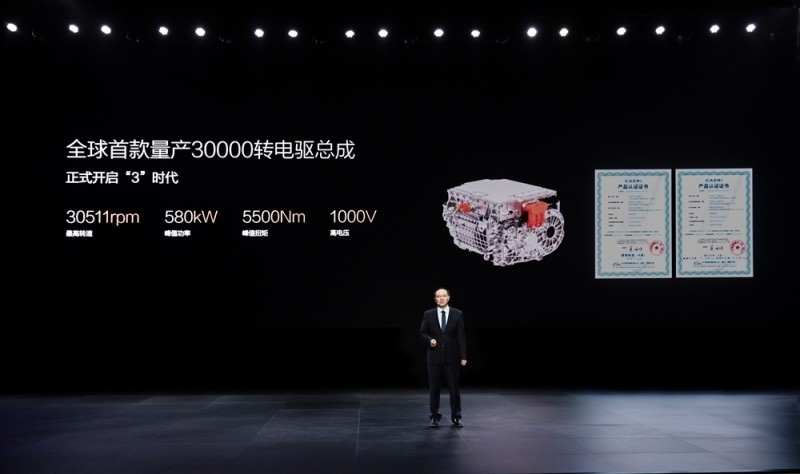As automakers compete fiercely in the EV space—focusing on range, smart driving, and battery technology—BYD’s ultra-fast charging technology has the potential to reshape consumer perceptions and eliminate range anxiety, further solidifying its global leadership.
At the core of BYD’s Super e-Platform is a fully liquid-cooled megawatt-level flash charging system, ensuring both stability and safety during high-power charging. The platform also features BYD’s latest silicon carbide (SiC) power chip, supporting voltages up to 1,500V, among the highest in the automotive industry. The flash-charging battery technology integrates an ultra-fast ion channel, reducing internal battery resistance by 50%, further enhancing charging efficiency. Additionally, the adoption of a 30,000 rpm high-speed motor not only boosts power output but also reduces weight and volume, increasing power density.

Looking at the current automotive landscape, BYD has a clear advantage. For example, Tesla’s Supercharger network can provide 275 km of range in 10 minutes. The newly launched Mercedes-Benz CLA with EQ Technology, benefiting from an 800V architecture and 320kW fast charging, can replenish 325 km of range in 10 minutes. Meanwhile, Li Auto’s EVs, equipped with CATL batteries, require 12 minutes to charge 500 km, still falling short of BYD’s 2 km per second charging speed.

Despite its revolutionary advancements, BYD's battery and charging technology still face several challenges. First, ultra-fast charging could impact long-term battery lifespan, potentially accelerating degradation. High-current charging increases the risk of overheating, which could affect safety. Additionally, most existing charging stations do not yet support ultra-high-voltage charging (above 1,000V). However, BYD has announced plans to build 4,000 dedicated ultra-fast charging stations in China, aiming to overcome infrastructure limitations.

If BYD can address these challenges and successfully commercialize its flash charging technology, it could significantly reduce consumer charging anxiety and accelerate EV adoption. Meanwhile, NIO, a leader in battery swapping technology, has built 3,200 battery swap stations worldwide, offering an alternative solution for rapid EV range replenishment. However, the success of BYD’s megawatt-level flash charging may determine whether battery swapping remains a competitive solution.
As BYD pushes charging technology to new heights, many automakers are also focusing on advancing battery technology, with solid-state batteries receiving the most attention. Due to their lack of liquid electrolytes, they offer higher safety and durability by reducing the risk of short circuits and overheating. However, challenges such as high production costs, manufacturing scalability, and performance instability in low temperatures still hinder mass adoption. In the short term, BYD’s strategy of improving lithium battery technology to achieve faster charging appears to provide a more immediate competitive edge.
In conclusion, BYD’s launch of the Super e-Platform and its revolutionary charging technology is expected to drive more automakers to invest in fast-charging solutions. As EV charging experiences become more comparable to traditional gasoline refueling, this breakthrough could further accelerate the global transition to electric mobility.